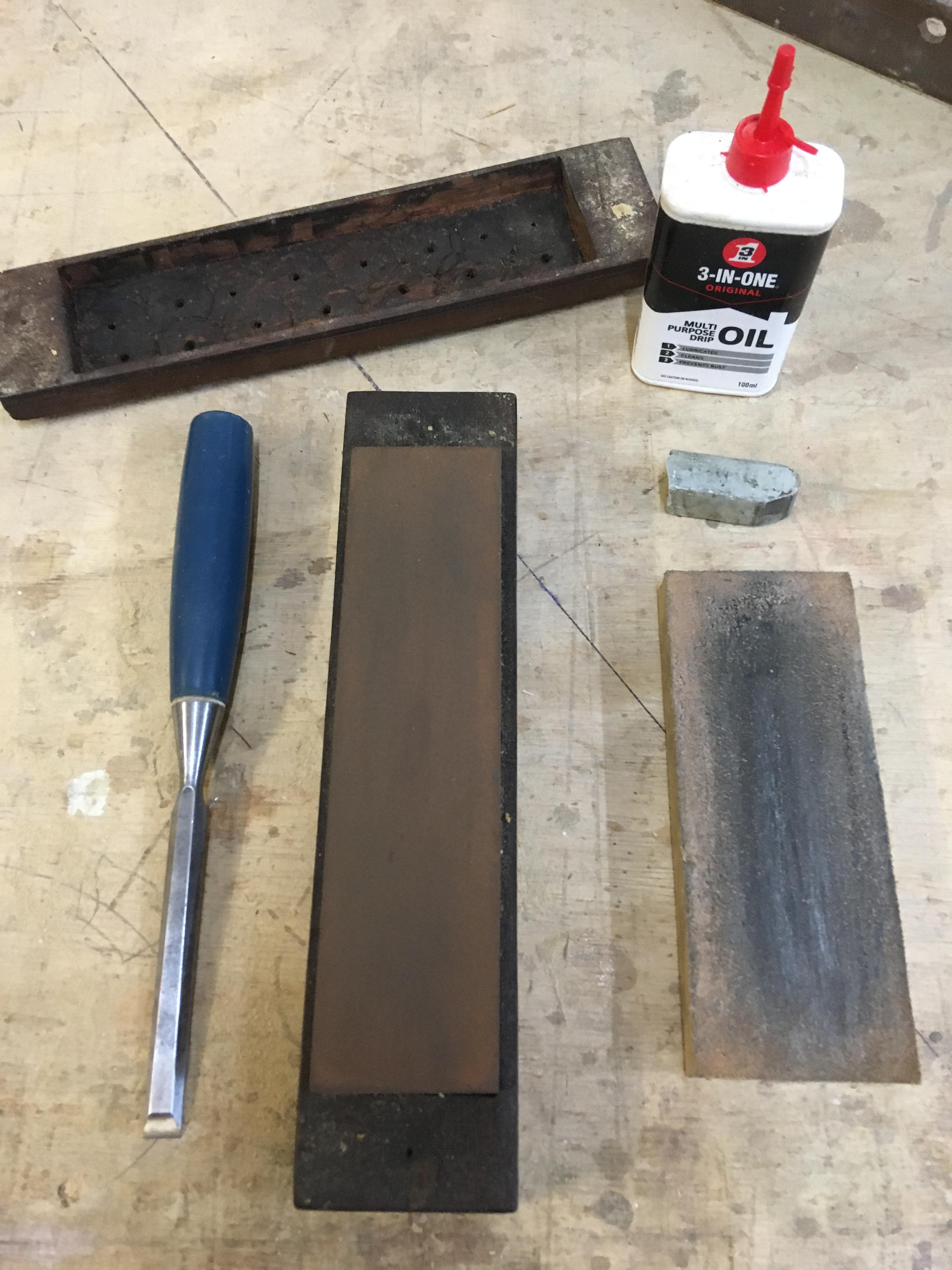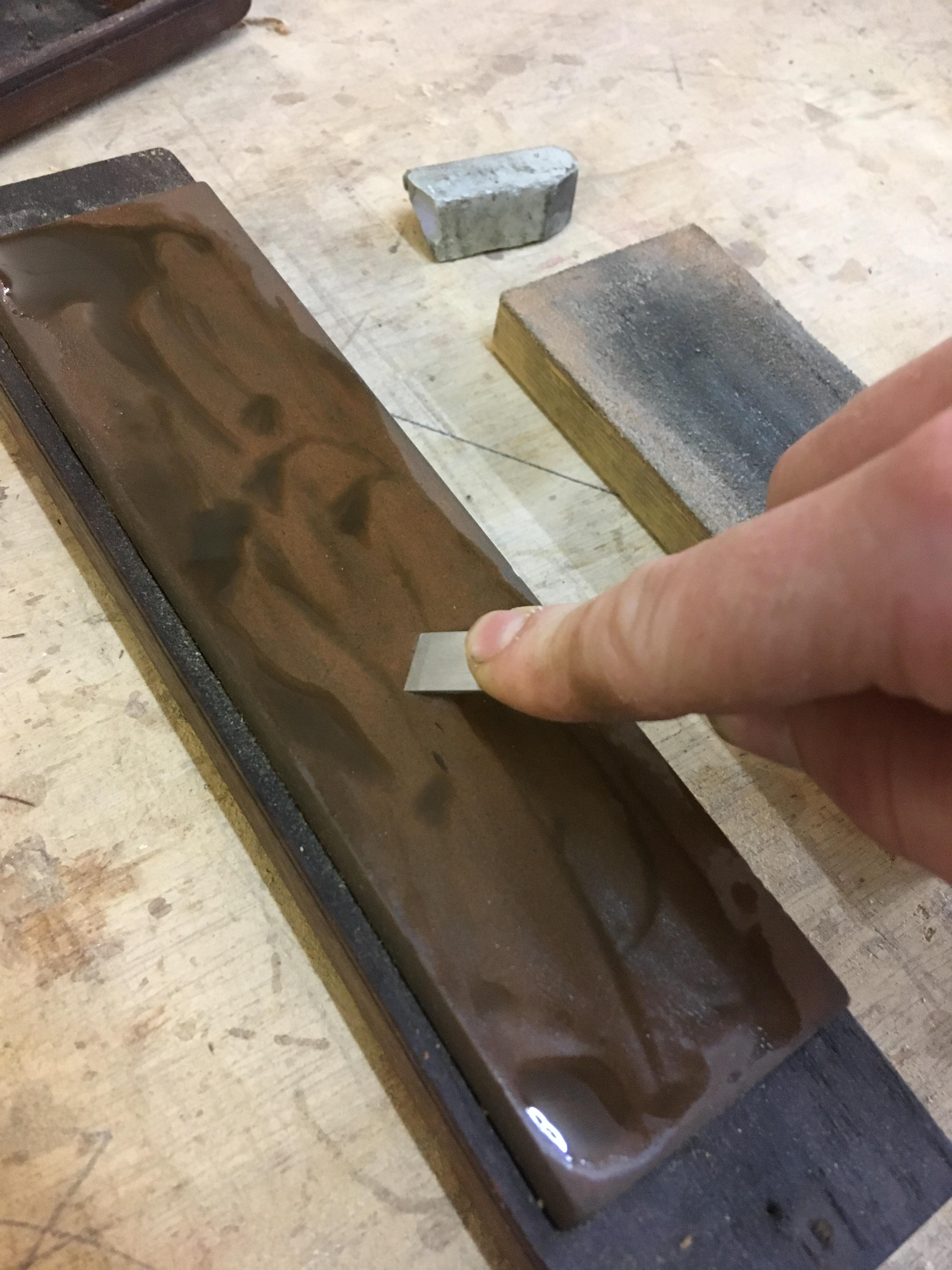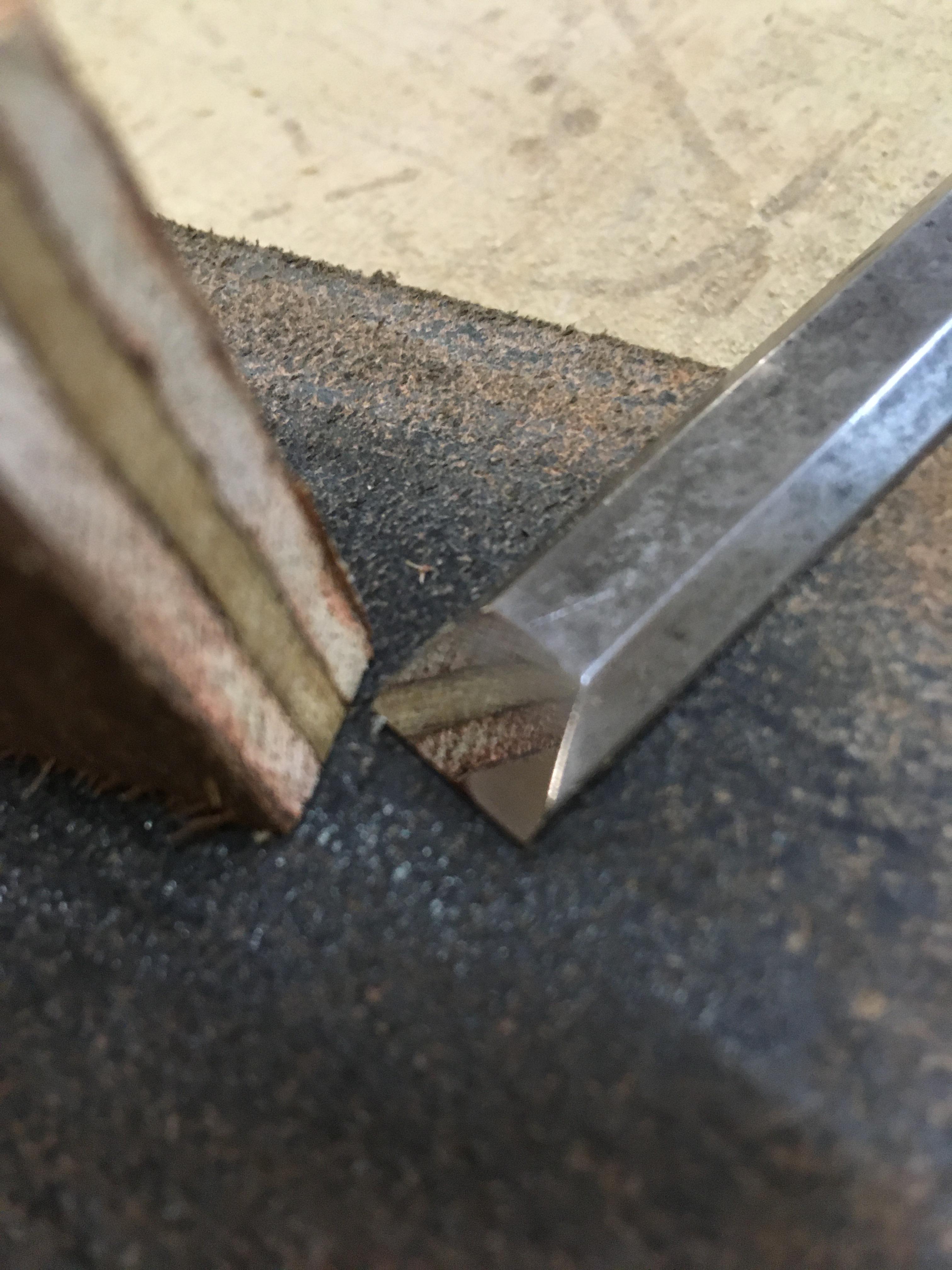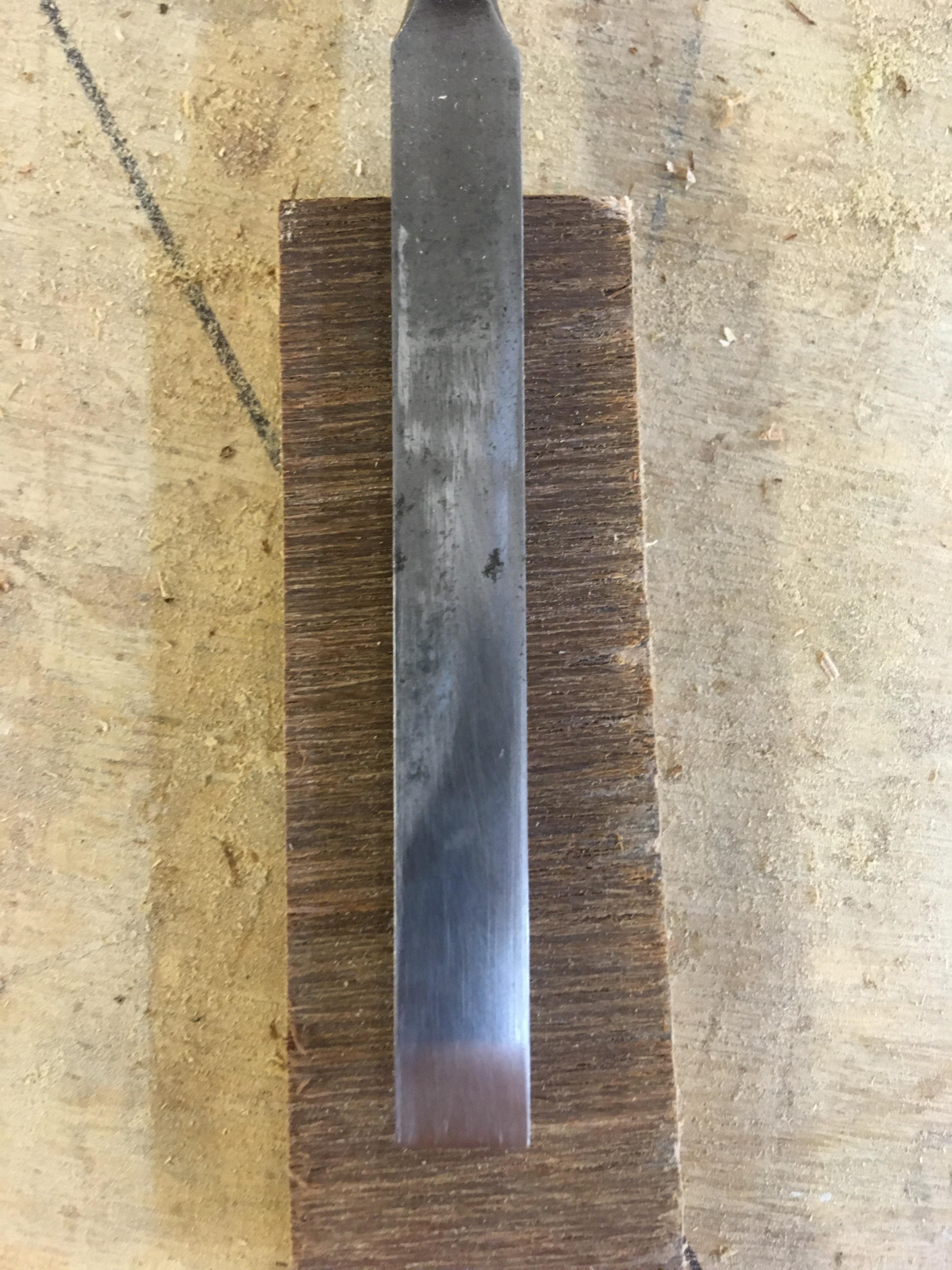I touched up one of my chisels today so I thought I'd take some pictures of the process to post up here

This is my set-up, one Norton India Stone (I think it is a Norton anyway, could be anything to be honest!), a piece of leather stuck to a piece of wood, a bit of polishing compound and some 3 in 1 oil for the stone. Buying new you'd be looking at around £30 for the stone, £3 for the oil, £3 for the bit of compound and the leather and wood is literally scraps.
Angle held and sharpened free-hand at roughly 30 degrees or so, the angle is not
particularly critical in my humble opinion although some may argue it is detrimental to how the chisel operates. Sharpening in figure-eights of varying size trying to cover the majority of the stone until you can feel a burr developed on the cutting edge.
Now, it's not a very pretty perfectly flat and square bevel like you'd get off a honing guide but it works all the same.
Rub a little compound on the leather and 30 or so runs on the strop leaves you with a mirror finish and a very keen edge, a couple of swipes on the back of the chisel to remove any remaining burr pretty much finishes off the chisel.
On the flatness of the back of the chisel, you could only really call the first inch or so of my half inch chisel "relatively flat" as it may even be ever so slightly crowned rather than flat or dished, this doesn't really bother me too much. There is a very slight radius on the outer edges of the chisel which again, doesn't bother me too much since it means my fingers don't get all fish-gill slices when I'm doing paring work and the like.
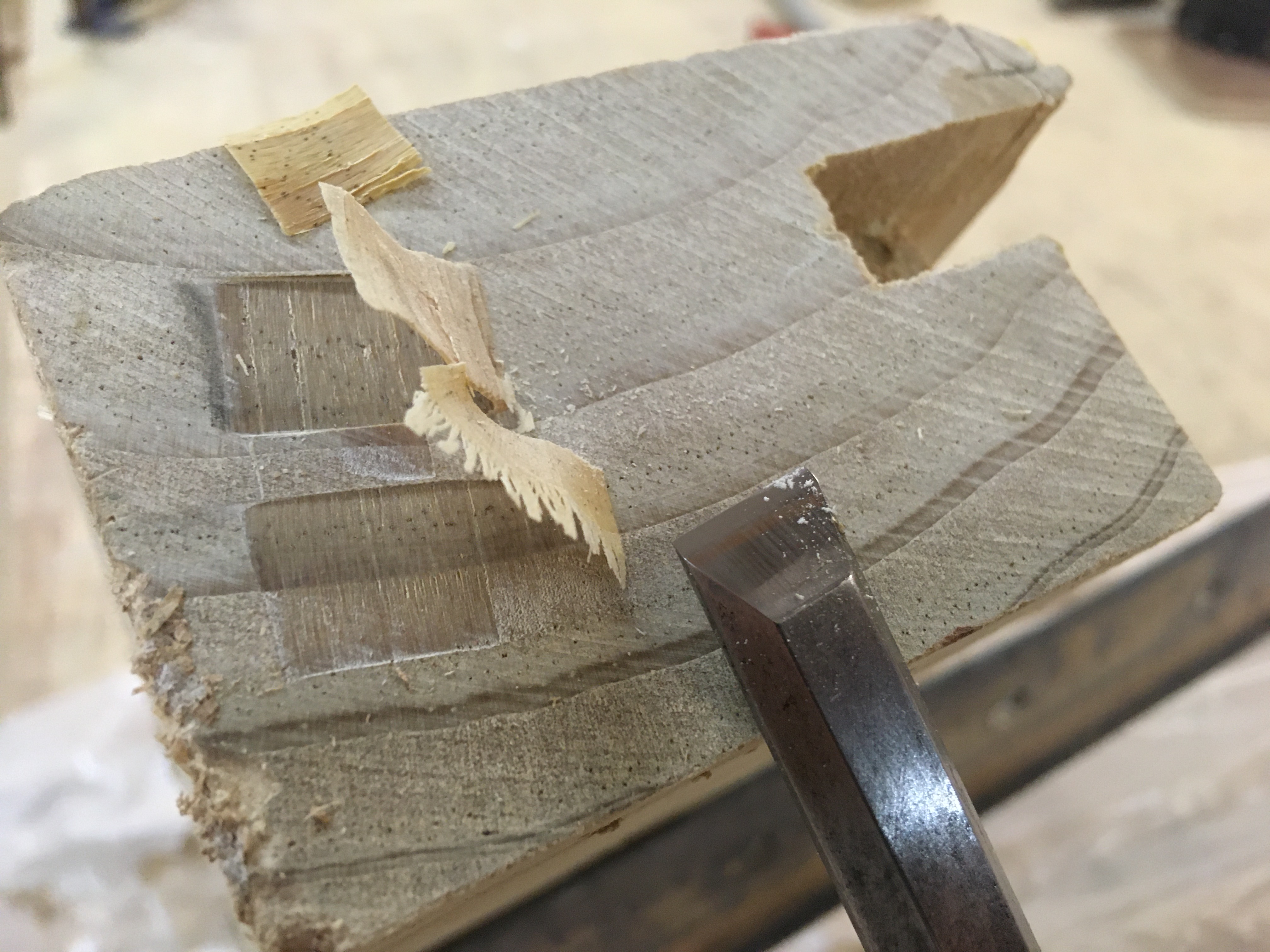
I could shave hairs with the chisel like every other sod who wants to show off but I'll show you something even more impressive and let the results speak for themselves, perhaps not to the unknowing eye though. The timber is Accoya, Radiata Pine, it's extraordinarily difficult to pare the end grain because of the very hard winter growth and super soft summer growth plus the fact it's only circa ~4% moisture content (which is ridiculously low) and without razor-sharp chisels it would just chip out and pull chunks out of the end grain rather than pare sweetly like above.
Sharpening took all of two minutes, including photo taking. Sure, it ain't all that fashionable and 'hip' as scary sharp, diamond plates or waterstones but
it literally does the same thing.
